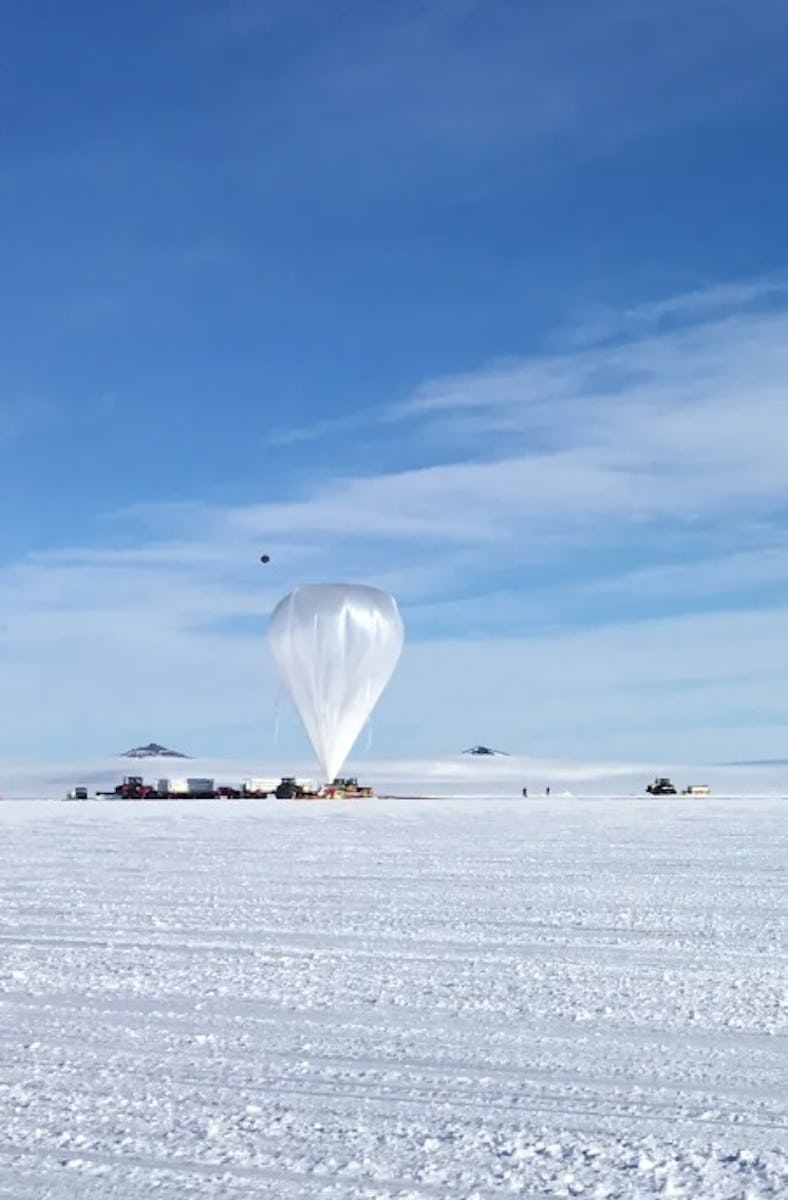NASA's Next Space Mission Will Rely on Centuries-Old Aviation
These three balloons will peer into the center our galaxy, study cosmic rays, and test technologies for future high-flying balloon missions.

NASA is about to launch a flock of giant balloons from Antarctica to the edge of space – for science, of course.
On December 1, as part of NASA’s annual Antarctic Long Duration Balloon Campaign, teams of NASA scientists and engineers at McMurdo Station will launch three giant, helium-filled balloons into the Earth’s upper stratosphere. Instruments aboard the balloons’ gondolas will map the center of our galaxy and the nearby Large Magellanic Cloud, study cosmic rays, and eavesdrop on the natural sounds of the stratosphere. Although far away from the space agency’s North American stomping grounds, NASA chose this snowy home base thanks to its near-constant sunlight and uninterrupted airspace.
Despite all the snow and ice, it’s actually the beginning of summer in the Southern Hemisphere, which means nearly constant daylight in Antarctica — perfect for solar-powered balloon payloads.
Up, Up, and Away!
The enormous balloon carrying NASA’s Galactic/extragalactic ULDB Spectroscopic Terahertz Observatory, or GUSTO, holds nearly 40 million cubic feet of gas when it’s fully inflated (ULDB stands for “Ultra Long-Duration Balloon.” (NASA heard you liked acronyms, so they put an acronym in your acronym).
GUSTO is a full-fledged telescope whose instruments can capture the longest infrared waves, and it will spend 55 days — or more, its team hopes — mapping interstellar gas in the Milky Way and our nearby dwarf galaxy, the Large Magellanic Cloud. And it will do it all while hanging beneath a giant helium balloon about 100,000 feet above Antarctica.
The stratosphere, the layer of Earth’s atmosphere from about 20,000 to 160,000 miles above the ground, is a great place for this kind of astronomy. To see in really long wavelengths like far-infrared, a telescope needs to be above troposphere most of the stratosphere because lower layers distort incoming light like a funhouse mirror. For more than a decade, NASA used a Boeing 747 to carry a telescope aloft to look at the universe in far-infrared wavelengths, but that program flew its final flight in 2022. However, unlike a jumbo jet, balloons can stay in the air for weeks or even months at a time, which is useful for keep a watchful eye on the ever-changing interstellar medium.
Along with GUSTO, an even larger balloon will carry the Electron Sub-Orbital Payload, or AESOP-Lite, a mission to study cosmic ray electrons and positrons (the antimatter version of an electron) that fall into Earth’s atmosphere. Scientists will compare AESOP-Lite’s data with information from the Voyager 1 and Voyager 2 missions, which have spent the last few years measuring cosmic ray electrons out on the far edge of our Solar System and beyond.
Riding shotgun with AESOP-Lite will be another set of instruments measuring the low-frequency sound in the stratosphere (the layer of Earth’s atmosphere from 4 to 30 miles up). The idea behind the Antarctic Infrasound Hand-Launch (Anihala) mission is to measure the natural soundscape “over a continent where human-generated sound is largely absent,” NASA says in a press release.
A third balloon rounds out the high-flying trio and will test whether solar panels, instead of heavy on-board batteries, can keep smaller science balloons flying for longer missions, something that’ll come in handy when NASA sends even more balloons aloft in the years and decades to come.